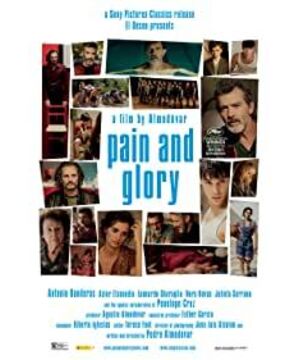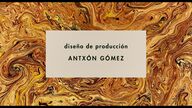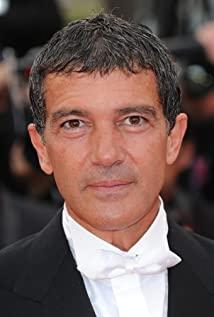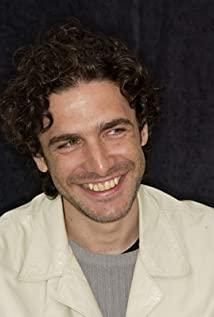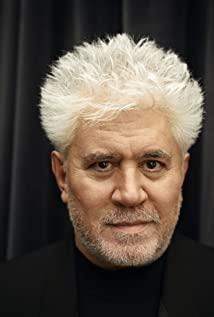If [Roma] is Karon’s [Amarcord], this [Pain and Glory] is Almodovar’s [8 1/2]. [8 1/2] Together with the director's semi-autobiographical work [Bad Education] more than ten years ago, there is a clear connection with this [Pain and Glory].
1.
[Pain and Glory] At the beginning, Salvator, the director in physical and mental distress, is suspended in the water
[8 1/2] At the beginning, the director Guido, who is in a mental and physical dilemma, floats in the air in his dream 2.
In [Pain and Glory], Salvator often thinks of his childhood in the trance of half dream and half awake, the film inserts part of the narrative of childhood
In [8 1/2], Guido often thinks of childhood in his unconscious daydreams, and the film is inserted into the childhood narrative 3.
In [Pain and Glory], Salvator went to a religious boarding school in his childhood and was selected by the priest to join the choir
[Bad Education] In childhood Ignacio went to a religious boarding school and was a member of the choir 4.
In [Pain and Glory], the adult Salvator wrote the past into a memoir "L'Adiccion", which was eventually adapted into a monologue
In [Bad Education], adult Ignacio wrote the past into a novel "La visita", and finally adapted it into the movie 5.
In [Pain and Glory], Salvator refused to adapt at one time, but changed his mind. He personally came to bring the text and handed over the right to adapt.
In [Bad Education], Juan refused to adapt at one time, but changed his mind. He personally came to bring the text and handed over the right to adapt 6. The most complicated group
In the monologue of [Pain and Glory] [L´Adiccion], the lover’s name is Marcelo, but his real name is Federico: Marcelo=Federico
In [8 1/2], the prototype of the director Guido played by the real-world actor Marcello Mastroianni is the film director Federico Fellini: Marcello=Guido=Federico
In [Sweet Life], the real-world actor Marcello Mastroianni played the fun of Marcello's prototype is the film director Federico Fellini: Marcello=Marcello=Federico
In [Pain and Glory], the prototype of the director Salvator played by the real-world actor Antonio Banderas is the film’s director Almodovar
In [Pain and Glory], the actor Alberto cooperated with the director Salvator in the early years [Sabor] and then parted ways (the director thought the actor was not suitable for the role), and then re-cooperated decades later
In [Bad Education], the actor Juan and the director Enrique cooperated [La visita] and then parted ways (the director thinks the actor is not suitable for the role)
In the real world, actor Antonio Banderas and director Almodovar collaborated several times in the early years, then parted ways, and re-cooperated decades later
In the real world, actor Marcello Mastroianni has collaborated with director Federico Fellini several times, and the latter regards him as another self 7.
[Pain and Glory], backstage after the end of the monologue, the starring Alberto ushered in an unexpected visit by one of the story’s prototype characters, Federico
In [Bad Education], the director Enrique ushered in the unexpected visit of Father Manolo, one of the characters in the story, backstage after the filming was completed 8.
In [Pain and Glory], director Salvator’s youth lover Federico’s parents live in Galicia
In [Bad Education], director Enrique’s boyhood lover Ignacio’s mother lives in Galicia 9.
In [Pain and Glory], Salvator wears sunglasses after taking drugs and hides it in front of the closest female Mercedes
In [8 1/2], Guido lied and put on sunglasses in an attempt to cover up in front of his wife Luisa
(The postures of both wearing sunglasses are the same) 10.
In [Pain and Glory], the image of Mercedes, the closest woman, overlaps with her mother
In [8 1/2], the image of his wife Luisa overlaps with her mother 11.
In [Pain and Glory], the director Salvator receives a letter that has been up and down for fifty years, and the person who wrote the letter has never seen him since parting.
In [Bad Education], the director Enrique receives a letter that has been up and down for several years, and the person who wrote the letter has never seen him since parting. 12.
In [Pain and Glory], Salvator had a sexual awakening when he saw the naked body of his brother Edouardo next door; Edouardo appeared repeatedly in the memories of adult Salvator
In [8 1/2], childhood Guido was sexually awakened because of the tall and plump body of Saraghina, a prostitute; Saraghina repeatedly appeared in adult Guido’s daydreams 13.
In [Pain and Glory], Salvator finally reconciles everything, from being unable to work to finding inspiration again, and starting to make movies
In [8 1/2], Guido finally reconciled everything, from the constant anxiety of not having filming inspiration to finding the courage to give up the movie plan at hand 14.
[Pain and Glory] The structure of the final play is revealed. The audience learns that the narrative of the film’s childhood is also the story of the childhood story of director Salvator’s new work [El Primero Deseo] in the film.
[Bad education] The structure of the play in the final stage is revealed. The audience learns that the narrative of all the frame changes in the film is also the content of the director Enrique’s new work [La visita] in the film.
Some random feelings:
It is beyond my ability to analyze this film completely, because the film blurs many boundaries-we will never know where the actor Alberto in the play ends, where the actor Antonio in reality starts; Salvator is Almodovar , And Banderas, just like the entertainment Marcello in [Sweet Life], it is both Marcello Mastroianni and Fellini—compared to ordinary movies, it involves too many things in reality, creating a bigger one The framework has left more gaps to be filled.
[Pain and Glory] and [Bad Education] The plots of the two films are put together, as if Almodovar had finished telling the story of his life. Those plots that have been filmed twice in the two movies have almost certainly happened—it is hard to imagine how much suffering Almodovar has endured.
My favorite line with my brother next door is the only painful part of the whole movie.
I watched it twice, the first time was the French dubbed version, with about a dozen people in the audience; the second time, the Spanish original soundtrack was accompanied by French subtitles, and it was almost full. After the show, everyone seemed to like this movie very much. When I first watched it, I thought that Antonio Banderas and Leonardo Sbaraglia were going to have a passionate scene, but it turned out to be in vain; being emotionally moved by the plot, every part that reminded me of [bad education] brought me close to tears. After watching it, I sat down for a long time; I noticed that Banderas was doing great at the second time. I have never seen him with such a cute twist, especially in the scene with Sbaraglia face-to-face. Too obvious.
Although the structure is too close to [8 1/2], it does not give me a sense of plagiarism. The use of Almodovar's iconic elements has played a big role.
This film makes me feel lucky.
View more about Pain and Glory reviews


